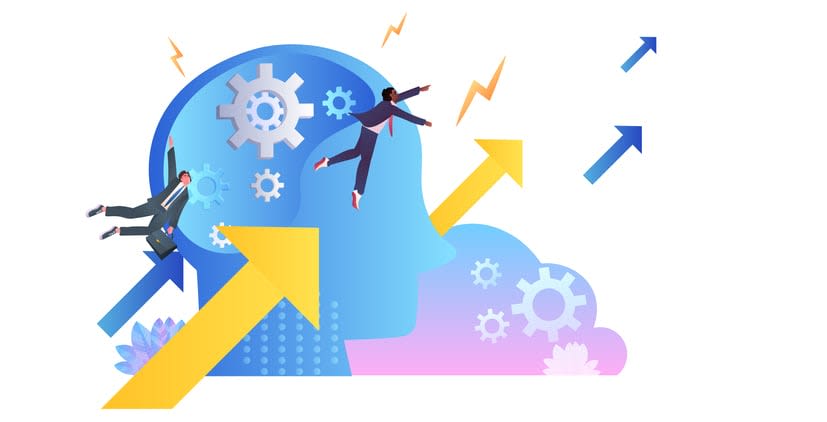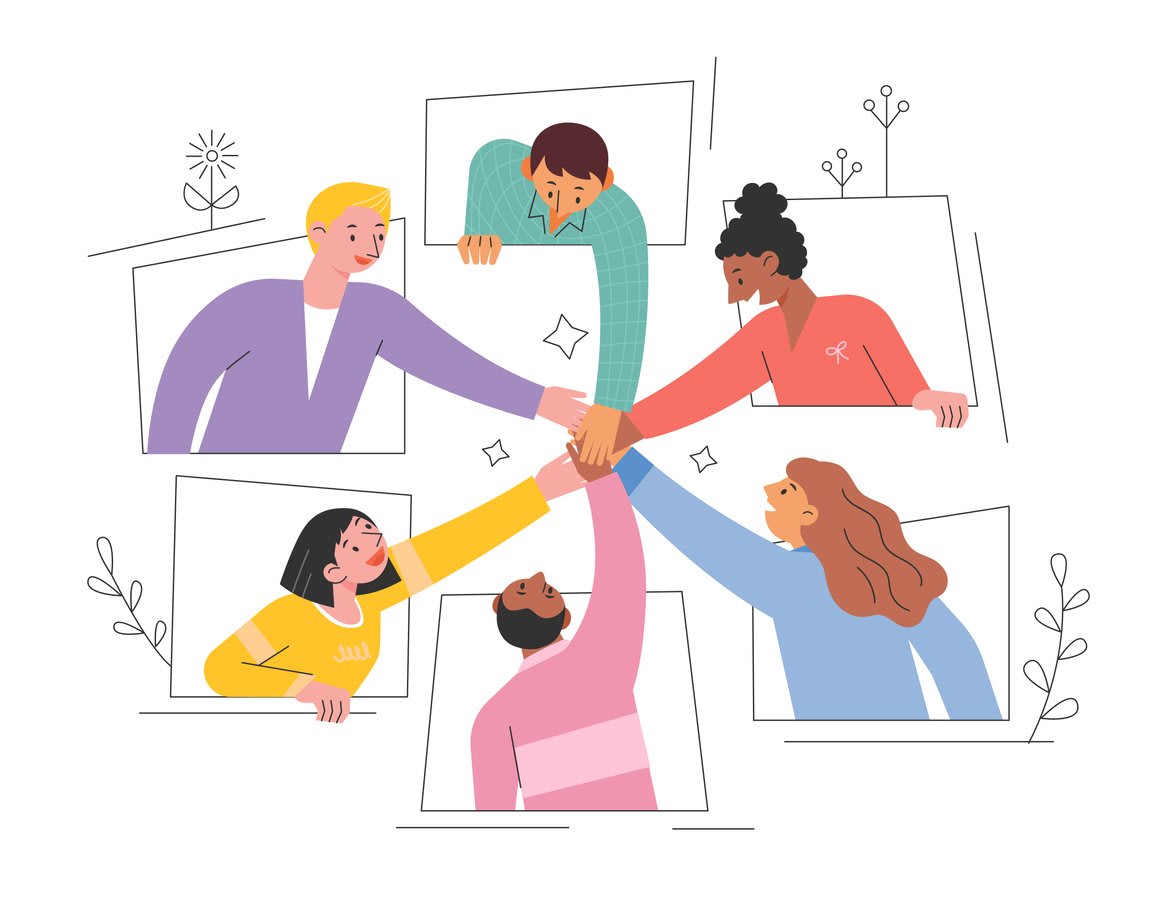In a world where teamwork and innovation drive the success of businesses, understanding the power of collaboration is crucial. The ability to work together effectively is more than just putting heads together; it’s about shared goals, open communication, and a commitment to achieving better results as a team. This blog post will dive into the definition, types, and benefits of collaboration, as well as the tools and strategies that can foster a collaborative culture.
Short Summary
- Collaboration involves shared goals, open communication and diverse skill sets to achieve a common goal.
- Different forms of collaboration include team, cross-functional, and community collaborations with their respective benefits.
- Organizations can foster successful collaborative efforts by building trust, promoting open communication and leveraging digital tools for enhanced teamwork & connectivity.
Understanding collaboration: more than just working together

Collaboration is the process of two or more people or organizations working together to accomplish a task or attain a goal. But why is collaboration important? In a business context, collaboration goes beyond simply working together; it involves shared goals, open communication, and a commitment to achieving better results as a team. The ability to define collaboration effectively is essential for the success of any project management effort or marketing team.
Collaborative efforts require diverse skill sets and problem-solving abilities. When individuals with different backgrounds and expertise come together, they can contribute their unique perspectives to tackle challenges more effectively. This intellectual endeavor is what makes good collaboration so valuable in achieving business goals. In essence, collaboration requires team members to work together, utilizing their individual skills to contribute to the overall success of the team.
Building strong relationships is also a crucial aspect of successful collaboration. When team members trust each other and communicate openly, they are more likely to share ideas, provide constructive feedback, and work well together. In turn, this fosters a collaborative culture that drives the success of the entire organization.
The essence of collaboration

Collaboration is the union of individuals or groups, integrating their abilities, expertise, and resources to attain a shared objective. The essence of collaboration lies in the partnership between these individuals or groups, combining their skills, knowledge, and resources to achieve a common goal. This collaboration definition is particularly significant in a business setting, especially in project management, where the aim is to accomplish business goals through a collaborative effort, leveraging the diverse skill sets and knowledge reserves of team members.
A key component of successful collaboration is the willingness to share ideas and learn from one another. This openness to new perspectives and rational self-interest promotes innovation and better collaboration. As law professor and collaboration expert Yochai Benkler states, “Collaboration is really an act of shared creation or discovery”. By embracing this essence of collaboration, organizations can unlock the potential for greater success and achievement.
Different types of collaboration
Collaboration can take various forms, including team collaboration, cross-functional collaboration, and community collaboration. Each of these types has its own distinct characteristics and advantages.
In this blog post, we will explore these three types of collaboration, shedding light on their unique features and benefits, and how they contribute to successful collaboration efforts.
Team collaboration
Team collaboration encompasses working within a designated team with a designated leader, established deadlines, and acknowledged achievements. This type of collaboration often involves virtual collaboration, where digital workplace technology is used to facilitate communication and access to work resources.
Mixed-skills teams are a common feature of team collaboration. Ad hoc teams are formed to manage projects which need many specialized skills. They may include a range of experts from different fields. Forming a mixed-skills team facilitates the breakdown of barriers within an organization and strengthens the links between departments.
An example of straightforward team collaboration is a marketing team striving to meet a deadline on a marketing plan while regularly providing updates on tasks accomplished or queries that arise.
Cross-functional collaboration
Cross-functional collaboration is a process whereby teams from disparate departments are brought together to pursue a shared objective, thereby encouraging creativity and implementation. This type of collaboration can result in heightened efficiency, creativity, and accomplishment by utilizing the varied abilities and understanding of team members.
An example of cross-functional collaboration is a sales team collaborating on a proposal, or a software team uniting to contribute to a source code repository. By bringing together teams from different departments, cross-functional collaboration fosters innovation and execution, leading to greater success for the entire organization.
Community collaboration
Community collaboration is focused on:
- Acquiring and disseminating knowledge within teams
- Promoting knowledge sharing among teams
- Transforming teams into repositories of knowledge instead of isolated subject experts working separately.
Social collaboration can result in successful teams that can address issues even when personnel are not present, and eventually, it can be regarded as one of an organization’s most powerful assets. Examples of community collaboration include:
- massively distributed collaboration in wikis
- electronic mailing lists
- blogs
- other content-producing virtual communities on the web
- intentional communities where individuals share common social, political, or spiritual objectives and are responsible for and share resources.
Collaboration tools: enhancing teamwork and connectivity

Collaboration tools, including:
- Cloud-based platforms
- Virtual workspaces
- Social networking
- Audio conferencing
- Instant messaging
- Team spaces
- Web sharing
- Video
- Telephony
are essential for fostering teamwork and connectivity in the digital age.
Investing in a digital workplace platform for virtual collaboration can provide the advantages of virtual meetings and the convenience of accessing work resources within the platform. For instance, Kumospace offers a range of capabilities, such as:
- File sharing and content creation of various formats
- Secure channels for confidential information
- Team chat communication
- AI note taking for meetings
By leveraging the power of collaboration tools, teams can stay connected, share ideas, and work efficiently, no matter where they are located. These tools play a crucial role in enhancing teamwork and connectivity, ultimately contributing to successful collaboration efforts.
The impact of effective collaboration on business success

Effective collaboration can result in heightened productivity, performance, creativity, and employee contentment, consequently leading to business accomplishment. Collaboration in the workplace is advantageous as it establishes a more open, connected, and engaged environment, which is appealing to both potential and existing employees.
Collaboration has been shown to result in increased employee satisfaction, higher success rates, improved team performance, and ultimately, business success. Furthermore, collaboration can augment productivity, improve job satisfaction, and bolster employee retention. As such, embracing effective collaboration and fostering a collaborative culture within an organization can have a significant impact on its overall success.
Overcoming challenges in collaborative efforts

Potential difficulties in collaborative efforts could include communication barriers, resistance to change, and interpersonal conflicts. To overcome these challenges, various strategies can be employed. For example, to overcome communication barriers, individuals can employ clear and concise language, actively listen to others, and be open to feedback.
Mitigating opposition to transformation may involve furnishing transparent communication, providing incentives, and facilitating flexibility. Addressing interpersonal conflicts can be achieved by establishing ground rules, promoting open communication, and concentrating on shared objectives. By recognizing and addressing these common challenges, organizations can ensure successful collaboration efforts and create a more cohesive, effective work environment.
Tips for fostering a collaborative culture

Fostering a collaborative culture requires:
- Building trust
- Promoting open communication
- Encouraging cross-functional learning
- Leveraging digital collaboration tools
Establishing trust is indispensable for cultivating a collaborative culture, as it permits team members to feel at ease voicing their ideas and perspectives without apprehension of judgment or censure. This promotes open communication and collaboration, which is fundamental for effective teamwork.
Cross-functional learning facilitates the exchange of information between team members, thus fostering the development of trust and collaboration, which are essential components for successful teamwork. Digital collaboration tools, such as cloud-based communication and virtual tools, can assist teams in staying connected and productive, even when working remotely. By implementing contextual collaboration, team members can better understand each other’s perspectives and work together more effectively.
By embracing these tips and strategies, organizations can foster a collaborative culture that drives success and achievement.
Real-world examples of successful collaboration

The Manhattan Project and Skunk Works are two examples of successful collaborations that demonstrate the power of teamwork and innovation in achieving groundbreaking results.
The Manhattan Project:
- Joint mission of the Allied forces in World War II
- Aimed to create the first atomic bomb
- Success
- Vannevar Bush advocated for the formation of the National Defense Research Committee, which coordinated the scientific capabilities of the United States for the Manhattan Project
Skunk Works is a term referring to a group within an organization that is granted a high level of autonomy, free from bureaucracy, and assigned to undertake advanced or confidential projects. This team designed remarkably modern aircraft in a short amount of time, surpassing its initial deadline by 37 days.
These real-world examples serve as powerful illustrations of the potential of successful collaboration, showcasing the importance of teamwork and innovation in achieving extraordinary accomplishments.
The future of collaboration: adapting to a changing world
The future of collaboration will necessitate adapting to novel communication methods, mastering collaboration tools, and sustaining effective teams in an ever-more interconnected world. This includes extending collaboration beyond meetings, embracing asynchronous collaboration, utilizing technology tools such as cloud-based communication and virtual tools, adapting to remote and hybrid work models, and incorporating artificial intelligence to improve collaboration and productivity.
Establishing a flexible and inclusive work environment that allows all employees to connect and participate effectively, regardless of their location, is also crucial to maintaining effective teams. By staying ahead of these trends and adapting to the changing landscape, organizations can continue to harness the power of collaboration to drive success in an increasingly interconnected world.
Summary
In conclusion, collaboration is a powerful force that drives innovation, productivity, and success in organizations. By understanding the different types of collaboration, mastering collaboration tools, fostering a collaborative culture, and adapting to a changing world, organizations can unlock the full potential of teamwork and achieve extraordinary results. The future of collaboration is bright, and those who embrace its power will be well-positioned to thrive in an ever-evolving global landscape.
Frequently Asked Questions
Collaboration in teamwork involves working together to achieve common goals, leveraging each member’s unique skills to generate creative solutions.
Teamwork requires each member to contribute their own ideas and skills to the group. This allows for a variety of perspectives and solutions to be explored, which can lead to more innovative and effective outcomes.
The four types of collaboration include cooperative, parallel, sequential and competitive collaboration. Each of these approaches has distinct advantages and disadvantages which should be weighed before deciding which type to implement.
Cooperative collaboration involves working together to achieve a common goal. This type of collaboration can be beneficial when working on complex tasks that require multiple perspectives. It can also be useful.
Collaborative efforts can often face communication barriers, resistance to change, and interpersonal conflicts, which can create challenges to achieving a successful outcome.
These issues can be addressed through effective communication, clear expectations, and a commitment to collaboration. By taking the time to understand the needs of each team member, and creating an environment of trust and respect, teams can work together.
To foster a collaborative culture, organizations should focus on building trust, encouraging open communication, and utilizing digital collaboration tools. Cross-functional learning should also be encouraged.
Collaboration tools are vital for enhancing team connectivity and efficiency, as they allow teams to share ideas and stay connected no matter the distance.
These tools can help teams stay organized, communicate more effectively, and work together more efficiently. They can also help reduce the amount of time spent on mundane tasks, freeing up time for more creative and productive work.





